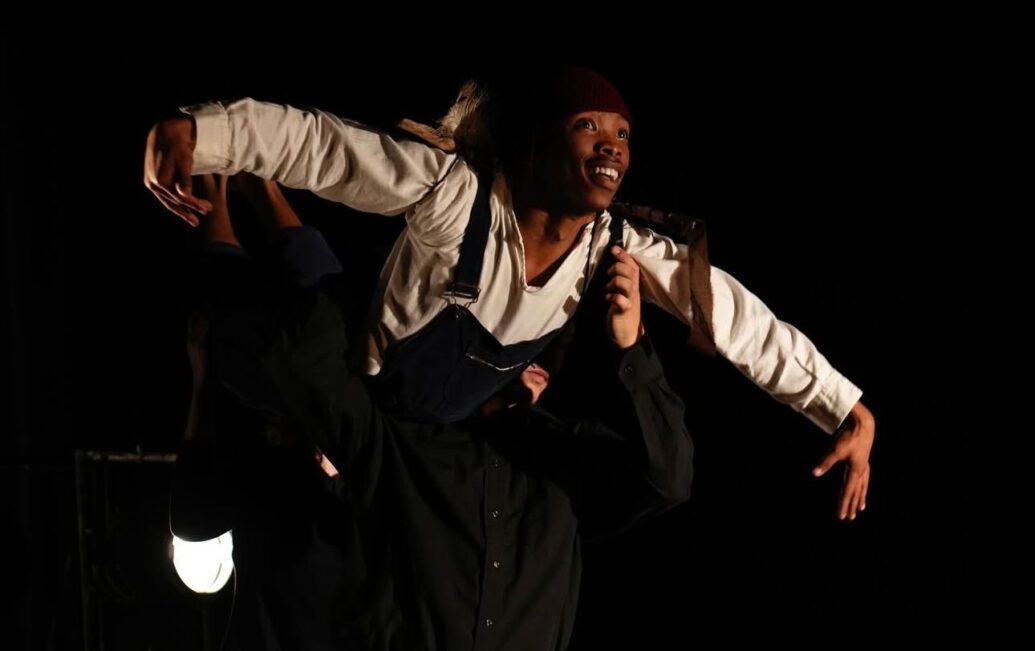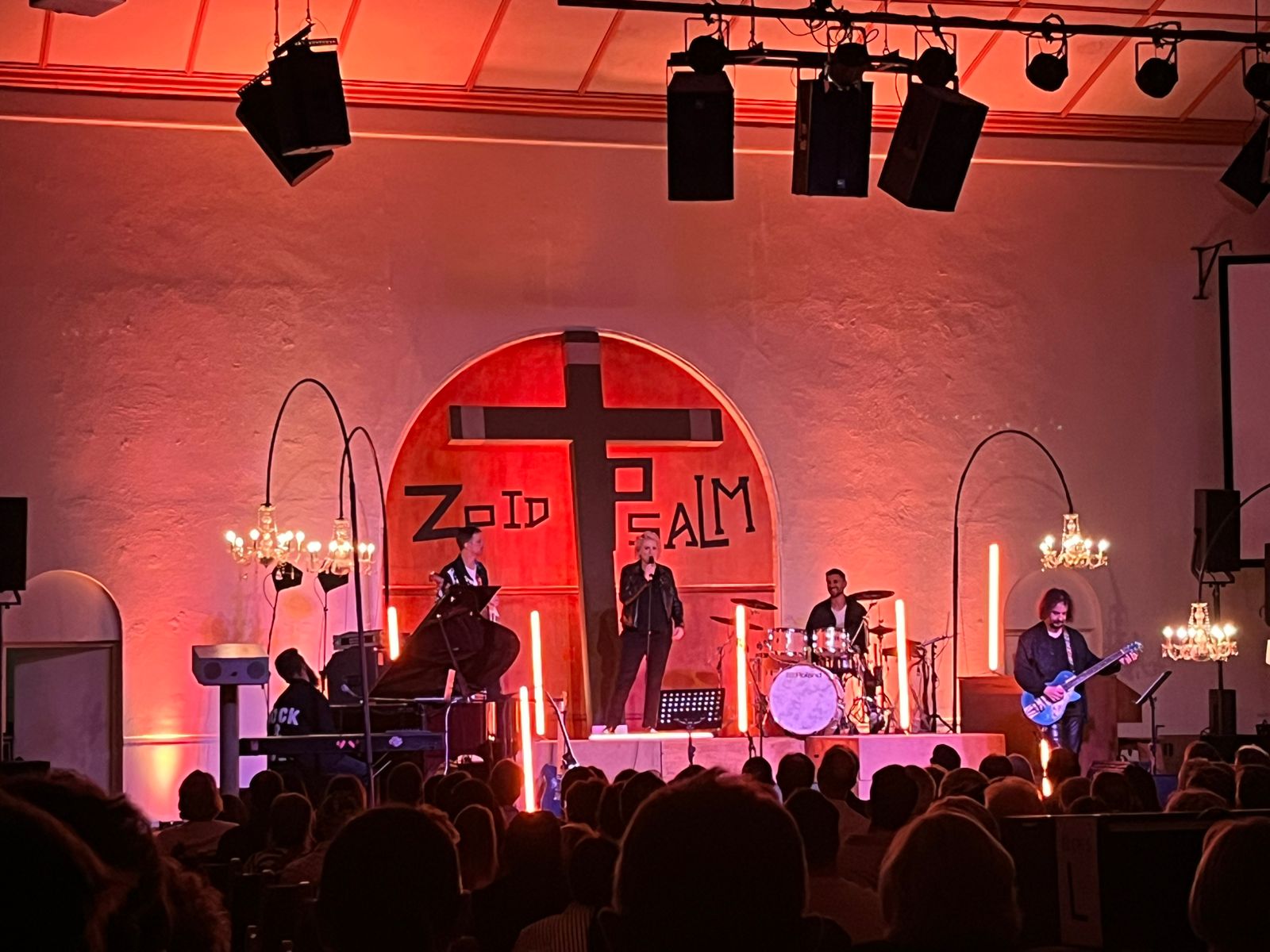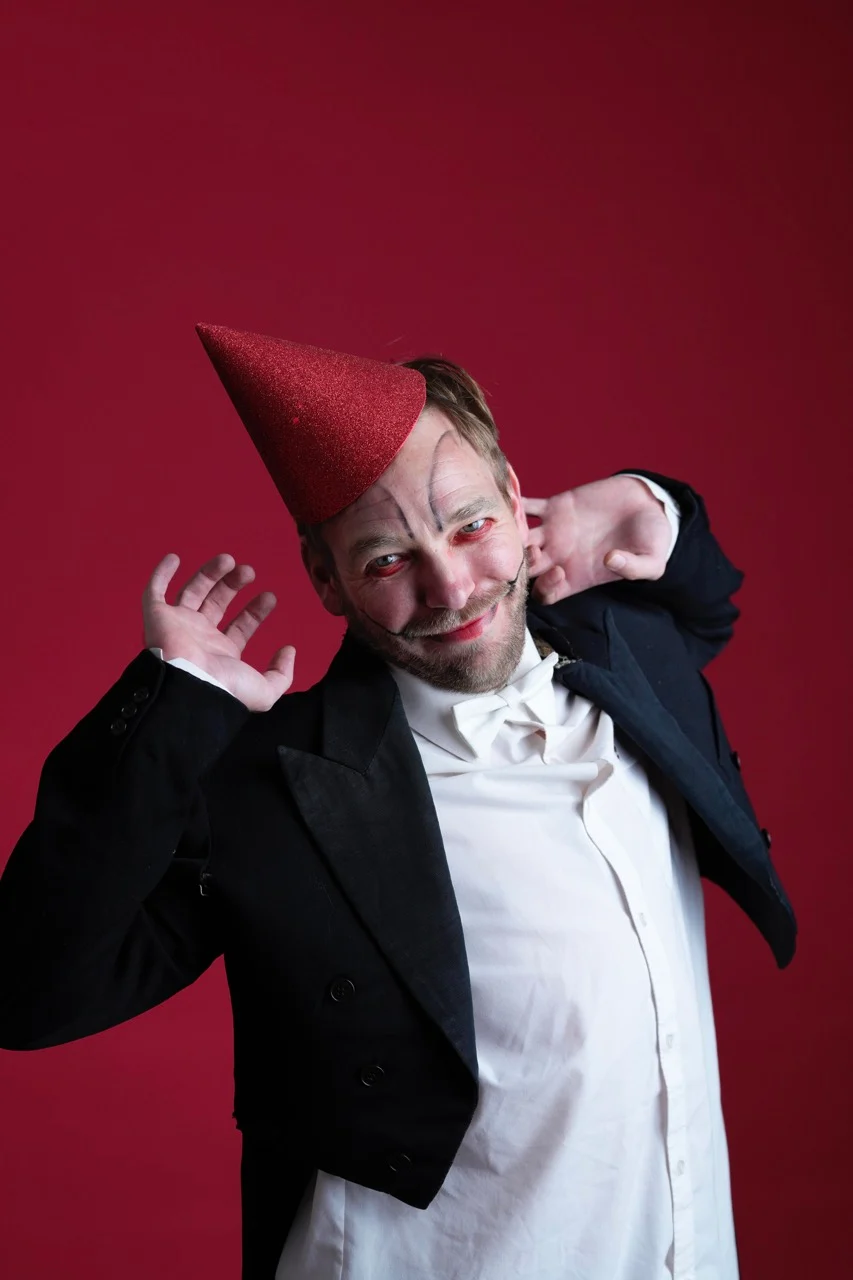On the evening of 23 July, the Adam Small Theatre was both graced and shaken by the debut of Yellowtail, a compelling entry in Stellenbosch University’s (SU) Prèmierefees. Written by Sonja Louw and Mila Sobolewski and directed by Louw, this physical theatre piece challenged expectations and moved its audience to reflect on individuality and defiance in the face of constraint.

Prèmierefees provides SU drama students a platform to write, produce, and perform original works. For Sobelewski, the festival is vital, “It gives us the chance to bring ideas to life we could never afford otherwise.” Yellowtail, she says, “began as a casual idea at a braai, sparked by the dreamlike space between sea and sky.”
The story follows Belop, played with raw intensity by Unam Sota, a boy forced into the fisherman trade by his father but who longs to fly. With broken twig “wings” strapped to his back, Belop encounters three birds, Shane Joseph, Jurie Boshoff, and Shannon Hendry, whose comic lessons only reinforce his outsider status. Eventually, he meets a crow, played by Sobelewski, an enigmatic guide and fellow outcast.

“Yellowtail is about someone trapped in tradition who dares to want something more,” Sobelewski explains. Her character embodies contradiction: mysterious, wise and darkly playful.
As head choreographer, Sobelewski led movement development rooted in detailed avian research. “We studied how birds fly, sound, and walk – and embodied that physically,” she says. This brought a sharp comic edge and emotional resonance that words alone couldn’t convey.

Echoing the structure of fables, Yellowtail resists a fairytale ending. Belop’s failure to fly results in a haunting physical breakdown, performed with disturbing beauty. The sparse use of sound – mainly breath and saxophone – was chilling, with Kalene Botha’s score providing a heartbeat the audience could feel in their bones.
Yellowtail placed third overall and won Best Actor (Sota), Best Supporting Actress (Hendry), and Best Costume Design. It’s a bold, visceral work that may not resonate with every viewer – its sparse dialogue, abstract movement, and symbolic form demand patience and an openness to artistic interpretation. But for those willing to engage, it offers an unforgettable, emotionally layered experience. As Sobelewski puts it, “You can put anyone into these characters.” This piece deserves a life far beyond its debut.
By Ella Bosman



